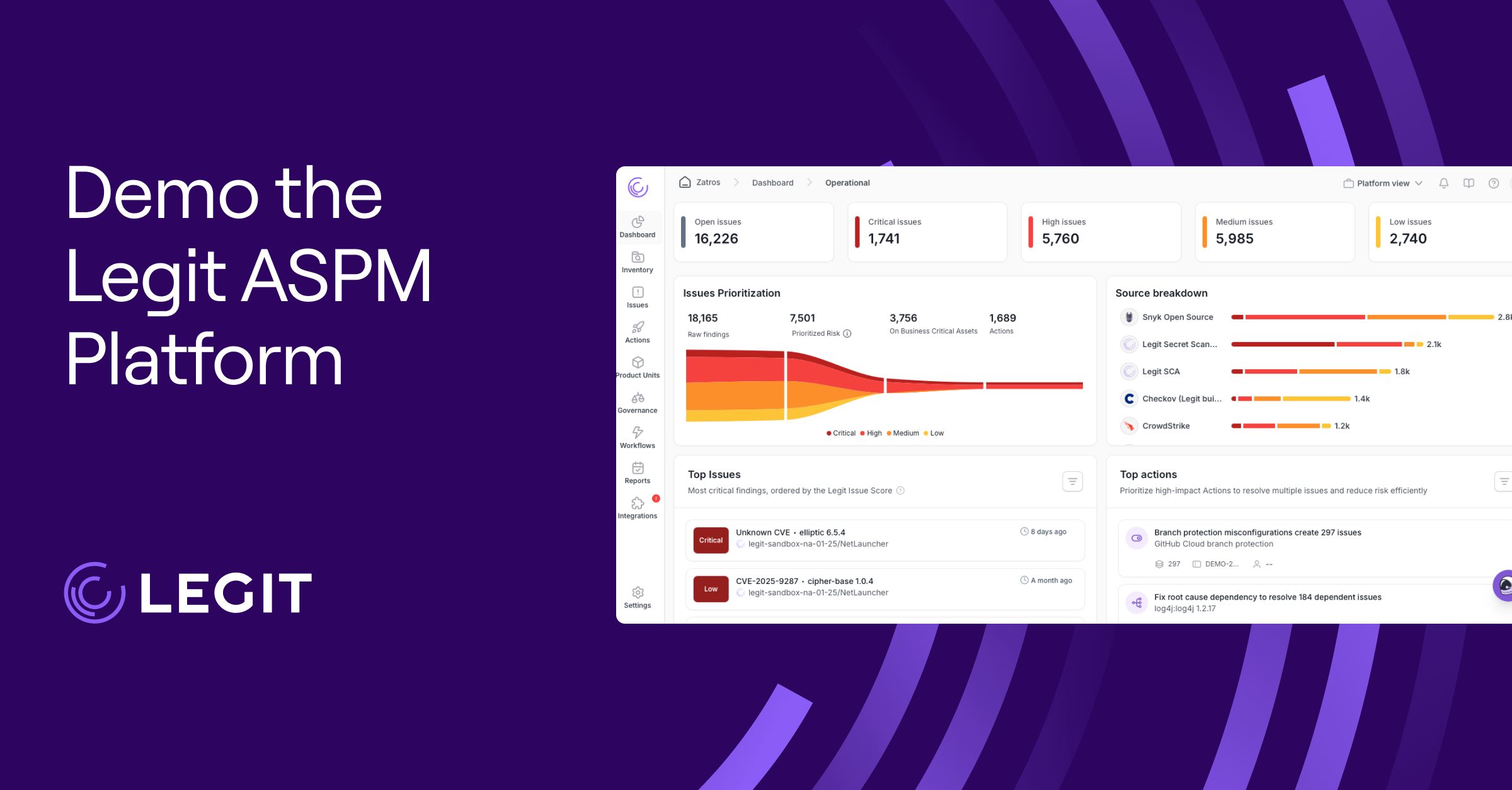Cloud computing has revolutionized the way businesses operate, offering agility, scalability, and flexibility, allowing these companies to quickly set up and grow comfortably without needing to heavily invest time and resources. However, these advancements have brought unique security risks that have led to the rise of increased attacks, data breaches, accidental data leaks, and vulnerabilities found in new attack surfaces.
Due to this new need to safeguard intricate cloud environments, CNAPP, or cloud-native application protection platforms have emerged for tackling the multifaceted vulnerabilities inherent to cloud computing. This article will help you understand what CNAPP is, the benefits you can expect from using a CNAPP, and key considerations when it comes to finding the right provider for you.
What is CNAPP?
CNAPP is an advanced solution designed to tackle the evolving challenges of cloud security. According to Microsoft, CNAPP is “An all-in-one platform that unifies security and compliance capabilities to prevent, detect, and respond to cloud security threats.” A CNAPP provides a centralized way of tackling cloud security and looks to streamline and simplify cloud security solutions by integrating numerous tools into a single, unified interface.
An advantage CNAPPs have is their ability to embed security throughout the entire cloud application development process. Rather than treating security as an afterthought, CNAPPs incorporate it from the earliest stages of cloud app development, guaranteeing a more comprehensive and rigorous approach to cloud app security at each phase of the development cycle.
When evaluating CNAPPs, it's essential to understand its most important components:
CSPM (Cloud Security Posture Management): This provides organizations with high-level visibility into potential threats and vulnerabilities, acting as an oversight and monitoring tool to keep cloud infrastructures secure.
CWPP (Cloud Workload Protection Platform): CWPPs provide proactive real-time threat detection and response management, playing a pivotal role in preventing expensive security breaches by continuously monitoring cloud workloads.
CIEM (Cloud Infrastructure Entitlement Management): For development security teams, managing permissions can be a daunting task. A CIEM simplifies this process by offering comprehensive management of permissions across all cloud systems.
CSNS (Cloud Security Notification System): CSNS ensures real-time protection by notifying teams of security threats, enabling quicker responses and resolutions.
When trying to answer the question "What is cloud native security?", a comprehensive and streamlined approach is the answer. Within its components, CNAPP is designed to be proactive, minimize security gaps, and help organizations deal with vendor complexity that can often come with a multi-solution cybersecurity tech stack. This new approach can help defend and protect against cloud security threats that are often targeting organizations earlier and earlier in the app development process.
The History of CNAPP Security
The term "CNAPP" was first mentioned by Gartner in 2021, and it quickly became the talk of the cloud security industry. With cloud computing becoming more and more essential to a company’s business operations, it became clear that traditional software security methods were losing their relevance and efficiency. Older cybersecurity strategies were overly compartmentalized and siloed, making them less adept at addressing the complexity of cloud environments.
Originally, CNAPP was primarily driven by CSPM and CWPPs designed to safeguard cloud-based systems. However, there was a need for broader capabilities, given how integrated the cloud was within any given organization’s infrastructure. However, there was also a need to avoid repeating past mistakes of overloading cybersecurity and DevSecOps departments with multiple-point solutions. As a result, CNAPP evolved to incorporate the additional elements mentioned above but in a centralized and integrated way.
The evolution of CNAPP demonstrates the cybersecurity industry's ability to not only directly address the threats and risks many companies face, but also think about the operational and organizational challenges companies face in trying to secure their cloud environments and software development lifecycle. Without a holistic cybersecurity strategy, it would be easy to overwhelm an organization with multiple point solutions. By opting for CNAPP, organizations now have a scalable way of comprehensively addressing their cloud security challenges.
How CNAPP Is Revolutionizing Cloud Application Security
Managing software and application development within ever-expanding cloud environments is already an intricate process — securing these environments is even more complicated. The sheer interconnectedness the cloud offers provides clear collaborative and productivity benefits but also opens the door to a myriad of risks. There are now countless entry points for malicious actors and unauthorized users, and the improved accessibility made possible by the cloud also means that a malicious actor can easily find sensitive data at the edge of an organization’s environment.
However, with CNAPP, these vulnerabilities and risks are mitigated. Here’s how the platform addresses these cloud-native application security concerns:
Centralized Compliance/Permissions Management: One of the most significant challenges in cloud software development is managing compliance and permissions across different platforms and systems. CNAPP streamlines this by centralizing the process, ensuring consistent standards, and simplifying oversight within a complex environment.
Seamless Threat Analysis & Prioritization Intelligence Integration: Speed is crucial in cybersecurity and CNAPPs. CNAPPs seamlessly integrate multiple intelligence sources to ensure efficient and effective threat analysis, prioritization, and response capabilities.
Efficient Multi-Cloud Management: Organizations are increasingly using multiple cloud providers across their business operations and software development lifecycle, introducing more complexity to their environment. CNAPPs is designed to address this with multi-cloud systems management, allowing teams to monitor their multiple clouds and enforce security measures consistently across all platforms.
Enhanced 'Shift Left' Approach: “Shifting left" refers to addressing security concerns earlier in the software development process to incorporate cybersecurity measures within the entire software development lifecycle. CNAPPs enhance and enable this approach, resulting in a more proactive software security strategy.
Simplification and Streamlining: Adopting CNAPP drastically simplifies the process of maintaining security while reducing the time, labor costs, and challenges traditionally associated with managing comprehensive cloud security.
Unparalleled Security Insights: CNAPPs provide key insight in addition to comprehensive protection. This gives departments important details on where security blind spots may be while improving overall asset visibility capabilities for more thorough monitoring and detection.
Embracing CNAPPs is a big step towards ensuring resilient cloud security. As cloud environments continue to expand and diversify, platforms like CNAPP are important to incorporate in your cybersecurity strategy to avoid running into operational issues while having a way to address any new cloud security challenges that may arise.
Projections For The Future Of CNAPP
With new technologies, threats, risks, and vulnerabilities on the horizon, it’s important to understand how cybersecurity needs and priorities shift and whether your tools, solutions, partners, and strategies are enough.
When it comes to cloud application security and CNAPP, here are a couple of key predictions that may give insight into what may be needed in the future. With this information, executives and department leaders will be more informed and make better buying decisions when it comes to CNAPP.
CNAPP is here to stay
CNAPP is not a fleeting trend. The demand for fortified, efficient, and adaptable cloud application security will only intensify, especially as cloud-based environments as well as software developer environments continue to be targeted by threat actors.
Simplicity will continue to be a key priority
As organizations look to reduce siloes, enhance collaboration, and integrate developer, security, and IT teams, eliminating complexity and minimizing departmental exhaustion will be a priority. Integrated cloud-native security controls, unifying major processes and solutions, and finding novel ways to streamline processes within a platform will be key features to look for.
An increased breadth of coverage
As software becomes more intricate and interconnected, securing every aspect of the Software Bill of Materials (SBOM) and the entire software supply chain will be crucial. This means prioritizing an agile and flexible platform that can easily integrate and incorporate new third-party cloud environments and other infrastructure with minimal service interruption.
As CNAPP becomes an essential component of modern cybersecurity, how organizations will best utilize them depends on their platform choice. By focusing on the most important elements and ensuring the platform is keeping up with new trends in cloud application security, department leaders can ensure that they have a CNAPP that will serve as a key partner even as the organization changes, grows and evolves.
It’s Time to Shift Cloud Security Left with CNAPP
The Gartner CNAPP mention marked a major point in cloud-native application security. Shifting left and integrating cybersecurity as part of the software development lifecycle is necessary to deal with the cybersecurity challenges that have emerged given our reliance on cloud native application security.
Organizations are prioritizing simplicity and streamlined services just as much as prevention and detection and modern CNAPP vendors are aware that their platforms need to address the ever-growing list of needs that are the result of a complicated software development environment as well as threat actors who are developing new attack techniques.
To best equip themselves with a CNAPP designed to meet modern cybersecurity needs as well as potential future ones, we recommend considering platforms with a deep breadth of coverage. Complete asset visibility and discovery eliminates a major blind spot for many DevSecOps teams, and the best platforms will ensure your developers aren’t hampered or hindered by new security controls and detection capabilities.
To learn more about the solutions and platforms that may be best for your cloud application security, check out Legit Security here.
Download our new whitepaper.


